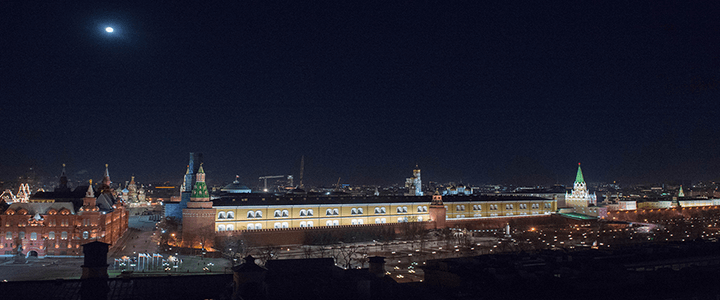If there’s one thing Vladimir Putin knows how to do, it’s make news (real and fake). His speech Friday to the members of the Russian Federation Council and the State Duma — the Russian legislature — outlined what he claims are Russian advances in nuclear weapons. What they largely were, was more disinformation and misdirection.
A nuclear-powered missile that probably doesn’t exist
Those who don’t pay close attention to nuclear issues, and those prone to Russiamania, were undoubtedly terrified by the Russian president’s pronouncements, complete with a badly rendered computer animation of multiple nuclear warheads descending on Florida. (You’d think a country that tries to pass-off computer game footage as actual events would have a better art department).
It is highly doubtful that Russia has developed, as Putin claimed, a “small-scale heavy-duty nuclear energy unit” that could propel a missile anywhere on the planet. Nuclear-powered ramjets and nuclear thermal rockets are real inventions. The U.S. experimented with them during the Cold War. They are also, in the words of Stephen Schwartz, publisher of the Bulletin of Atomic Scientists, “an especially nasty concept,” polluting everything around them with nuclear radiation. Furthermore, Russian nuclear observer Pavel Podvig has seen no evidence of a Russian program that could have led to this capability.
But claiming to have developed this capability makes Putin look good at home. He is, after all, facing “reelection” in a few weeks. Putin can be confident of his victory, since his main rival, Alexei Navalny, has not only been barred from running, he’s been in and out of jail for some time now.
You cancel a treaty, and I cancel a treaty
The prospect of multiple warheads descending on Florida is only possible, of course, because Russia withdrew from the START II treaty, which banned the use of multiple independent re-entry vehicles, the mounting of multiple warheads on a single booster. They did this, supposedly, in reaction to the U.S. withdrawal from the Anti-Ballistic Missile Treaty in 2002. Putin went to great lengths to stress that much of the Russian “advancement” is a reaction to that decision. “I will speak about the newest systems of Russian strategic weapons that we are creating in response to the unilateral withdrawal of the United States of America from the Anti-Ballistic Missile Treaty,” he said, “and the practical deployment of their missile defence systems both in the US and beyond their national borders.”
This is merely a convenient excuse. Russia could have developed its own ABM system. But since it is a sponsor of rouge states like North Korea and Iran, it doesn’t really face the threat of a one-off attack. So it took the opportunity to abrogate a different treaty.
The truth is an unreliable ground-based midcourse defense system simply does not have the capacity, let alone the reliability, to protect against a full-on strategic nuclear attack. Furthermore, terminal-phase defense systems like the Navy’s Aegis and Aegis Ashore systems, and the Army’s Terminal High-Altitude Area Defense System, are most effective against short- and intermediate-range missiles, not intercontinental ones.
A Russia with no military ambitions beyond its borders has nothing to fear from the U.S. anti-ballistic missile program. Admittedly, no one believes the U.S. official line that missile defense sites in Europe are designed to protect against the threat posed by Iran. They’re there to defeat a Russian tactical nuclear strike during a ground war. But a full Russian attack on the U.S. homeland would overwhelm the system. Everyone knows that… especially Vladimir Putin.
So put away your copies of Dr. Strangelove and The Day After. The Russian nuclear threat is real, but their capabilities are not what Putin wants you to believe.




